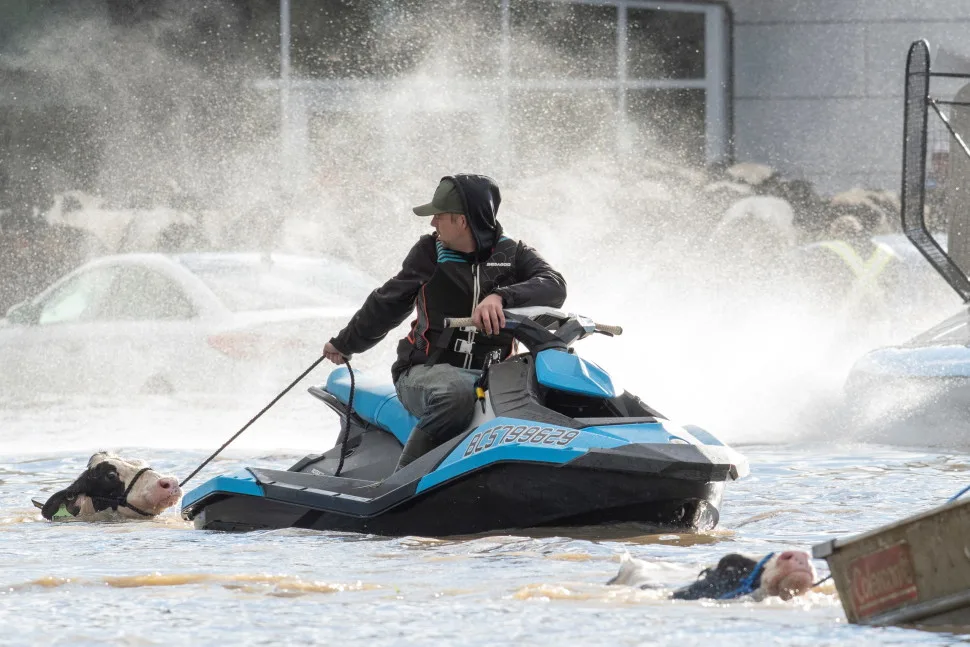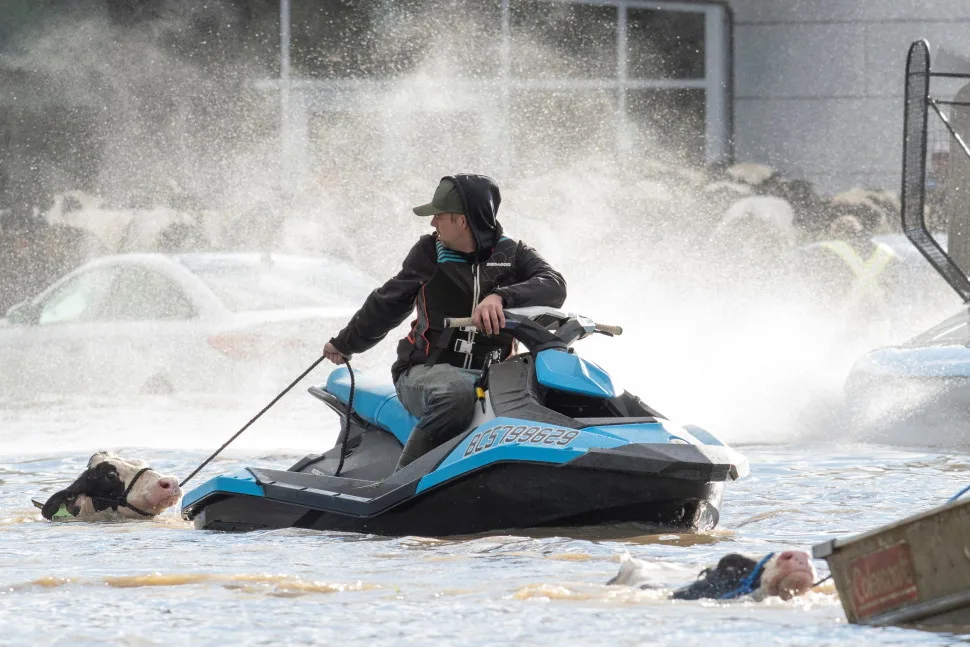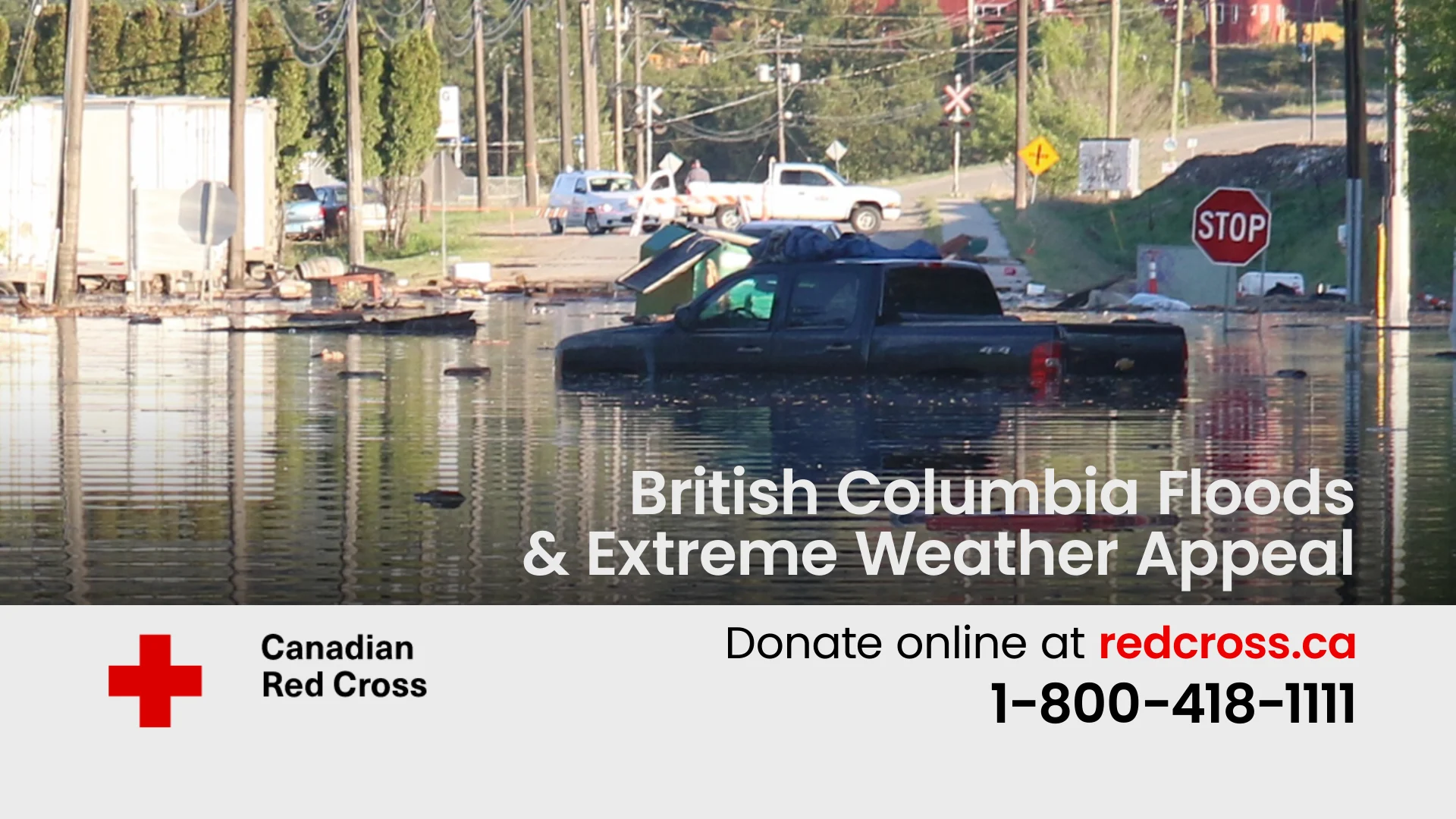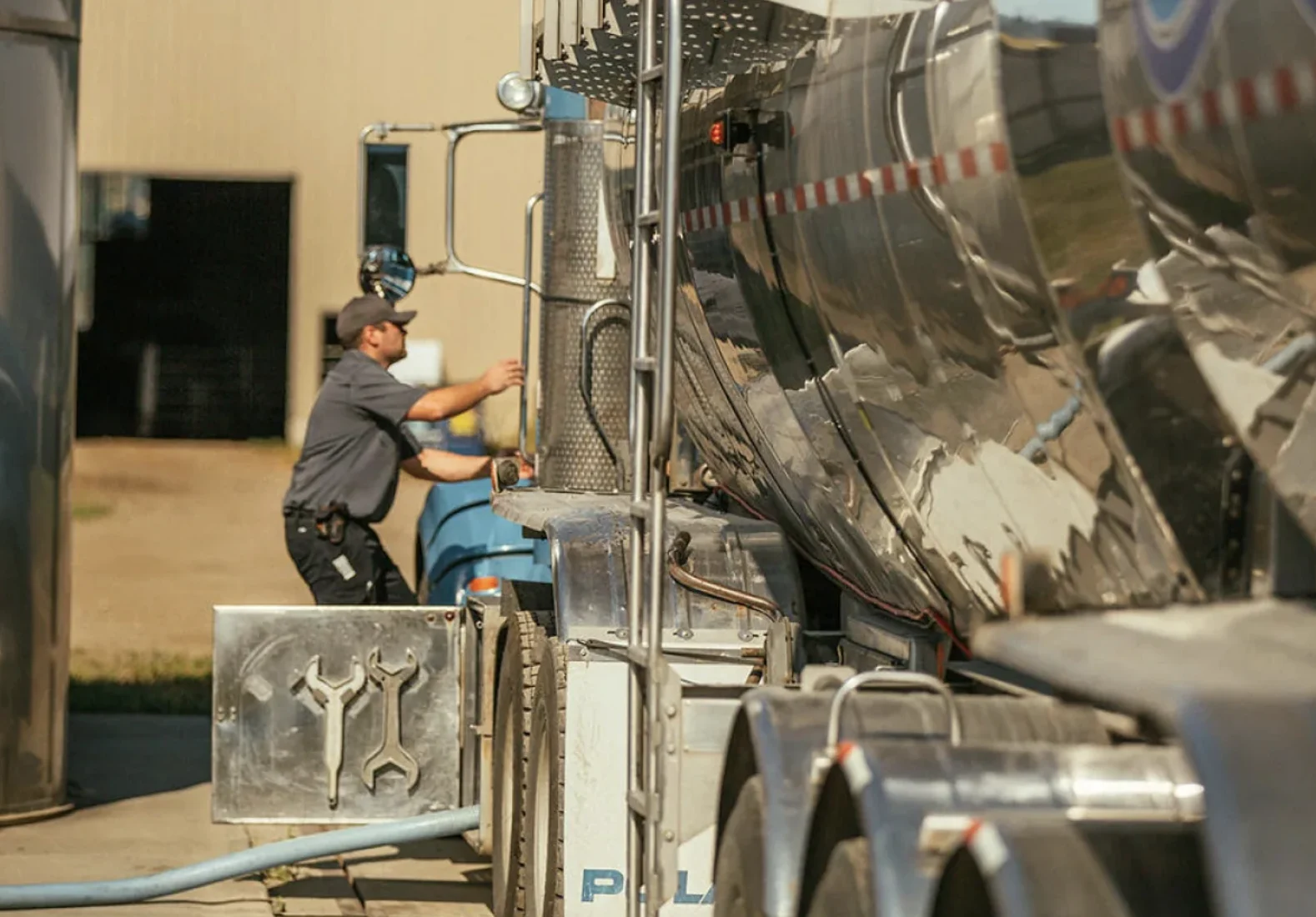
500 cattle perish in Fraser Valley flooding but thousands more saved
With the floodwaters rising over the Sumas Prairie, panic-stricken dairy farmer Gary Baars began evacuating his 214 cattle early on Tuesday last week in Abbotsford.
Baars' cows are among an estimated 6,000 cattle which were taken to other farms in the Abbotsford, Chilliwack and Agassiz areas, according to the B.C. Dairy Association (B.C. Dairy), which represents 470 dairy farmers across the province.
"The biggest emotion for me, it's just the people helping ... people who don't know me,'' he said. "They [volunteers] have just been doing it now for a week and just taking great care of our cattle."
ABOUT 500 CATTLE DIED, B.C. DAIRY ASSOCIATION SAYS
While Baars managed to save his cattle — they're being taken care of across four farms in Chilliwack — not all farmers were so lucky.

FILE PHOTO: Cows that were stranded in a flooded barn are rescued by people in boats and a sea doo after rainstorms lashed the western Canadian province of British Columbia, triggering landslides and floods, and shutting highways, in Abbotsford, British Columbia, Canada November 16, 2021. (REUTERS/Jennifer Gauthier/File Photo)
The B.C. Dairy Association says 500 cattle died in the flooding, a preliminary assessment whose numbers could increase, depending on the health of the remaining cattle and the potential for more flooding.
The association says approximately 23,000 cattle were located in the Abbotsford and Yarrow regions prior to the floods. An estimated 16,000 remained on their own farms while the rest were evacuated or died.
The Ministry of Agriculture says it has a team assembled to plan for the cleanup of deceased animals.

Debris litters a road in the Sumas Prairie flood zone in Abbotsford, B.C. on Monday, Nov. 22, 2021. (Ben Nelms/CBC)
"While just one cow perishing in a natural disaster is disheartening, it is a credit to the tireless work of farmers, their families and volunteers that so many cattle were saved and so few lost," said Holger Schwichtenberg, the chair of the B.C. Dairy Association and a dairy farmer in Agassiz.
Schwichtenberg, who took in 30 cows, is one of dozens of farmers who took in cattle to feed and milk before returning them to their respective farms.
"The phone call was not, 'Can you take any cows?' The question was, 'How many can you take?' And everyone opened their doors."
Their efforts are helping to improve B.C. 's milk supply.
MILK PROCESSING RAMPING UP
B.C. Dairy says approximately 80 percent of milk produced on B.C. farms is now being picked up for processing, which sufficiently meets the province's immediate demand for milk.

The pickups provide some hope as farmers had to dispose of milk that could not be picked up last week, due to flooding and road closures.
Schwichtenberg says he had to dispose of over 30,000 litres of milk while Baars had to dispose of a couple thousand litres.
B.C. Dairy says milk from the Okanagan and Kootenays is temporarily being shipped for processing in Alberta until Highway 3 improves.
"There's a lot depending on Highway 3 staying open right now. We're keeping our fingers crossed," said Schwichtenberg.
In the eastern Fraser Valley, milk is being trucked along Highway 7 which adds about four to five hours of drive time.
This challenge will continue until the situation on Highway 1 in Abbotsford improves, says B.C. Dairy.
According to the B.C Dairy Association, the farms still flooded on the Sumas Prairie represent about 14 percent of the province's milk volume.

Approximately 80 percent of milk from B.C. farms is now being picked up for processing. This is sufficient to meet imminent demand across the province, according to the B.C. Dairy Association. (B.C. Dairy Association via CBC)
'AN ENORMOUS REBUILD,' AGRICULTURE MINISTER SAYS
Agriculture Minister Lana Popham visited farmers and flooded areas in the Sumas Prairie on Tuesday.
"Their eyes are welling up with tears. They're in pain and so for me, to be here, [is] just to reassure them that we are going to be there."
She says the aftermath is an enormous rebuild and that it's important for the federal government to walk with the provincial government to help get farmers on their feet.
"We don't want people to fall through the cracks," she said.
Disaster Financial Assistance is available for anyone who is unable to obtain insurance to cover disaster-related losses, and applications are open until Feb. 12, 2022.
A B.C. emergency response line has also been set up for farmers who need emergency assistance at 1-888-221-7141.
CANADA GETTING ITS OWN ATMOSPHERIC RIVER RATING SCALE
*This article, written by Baneet Braich was originally published for CBC News.









